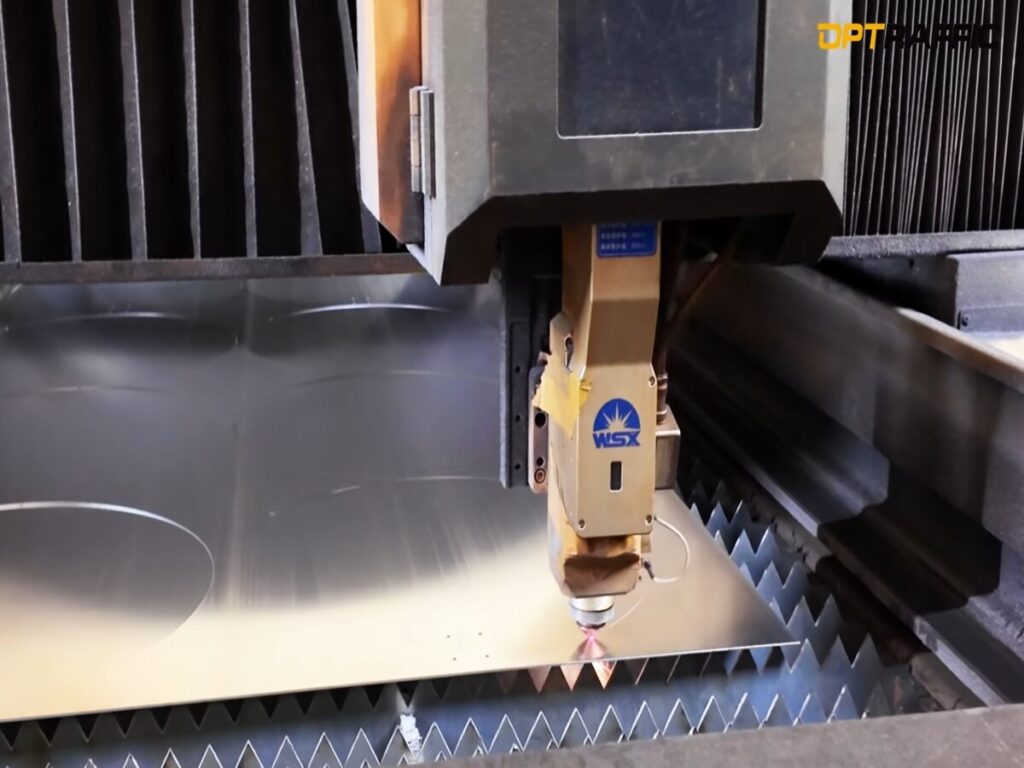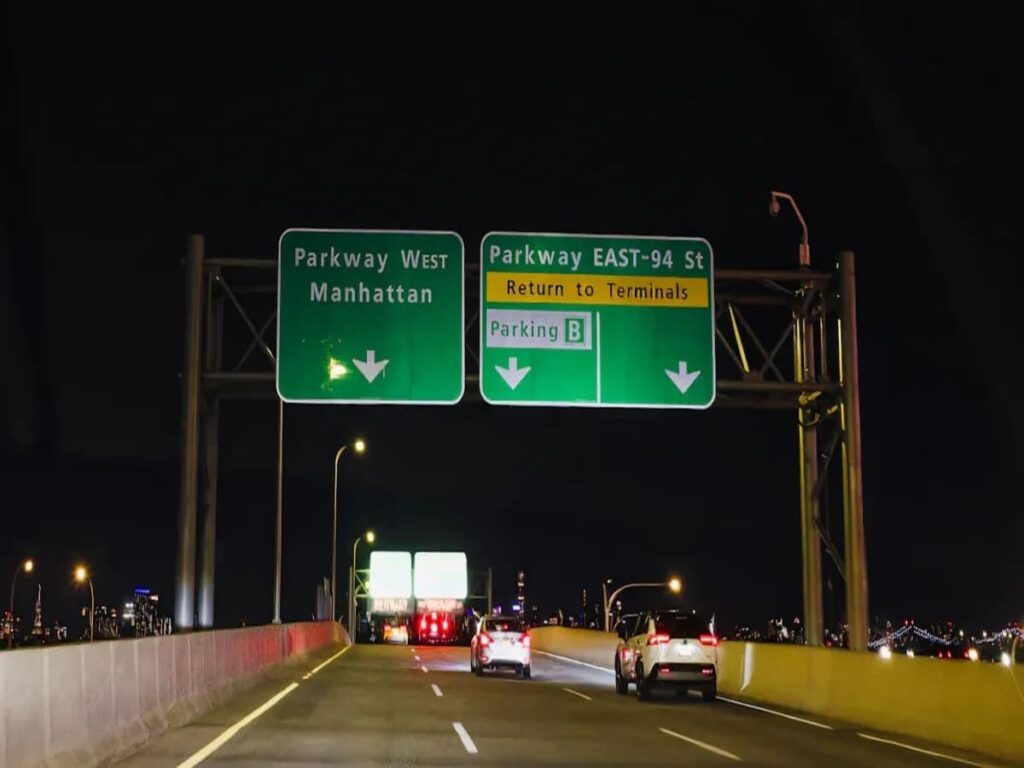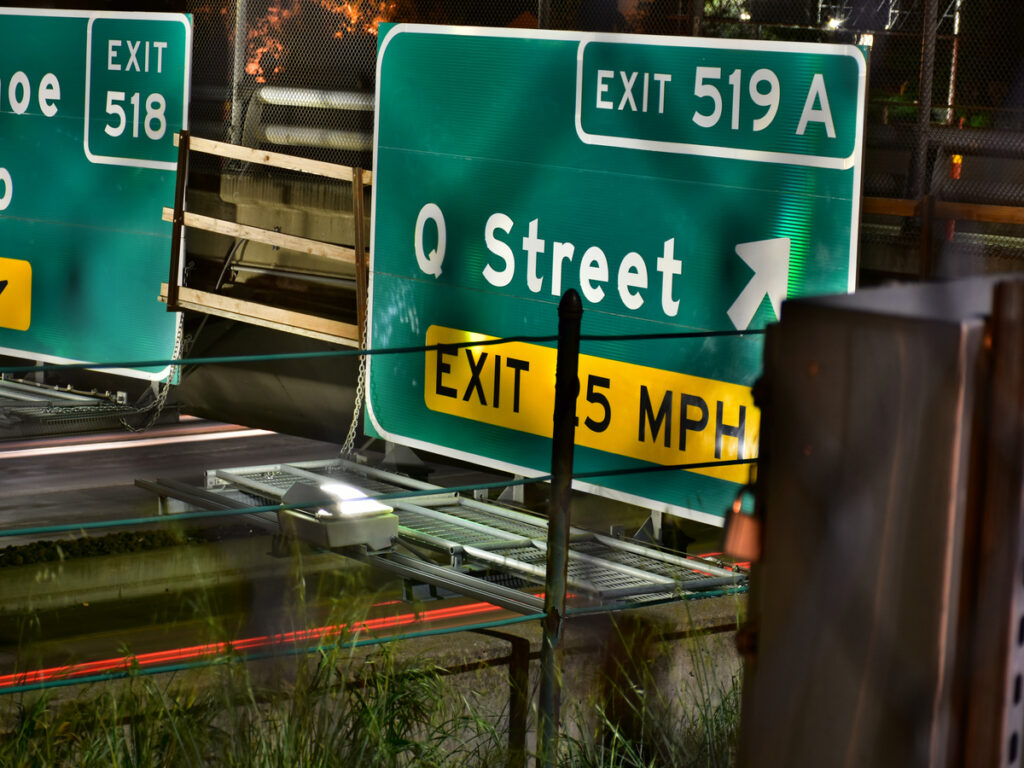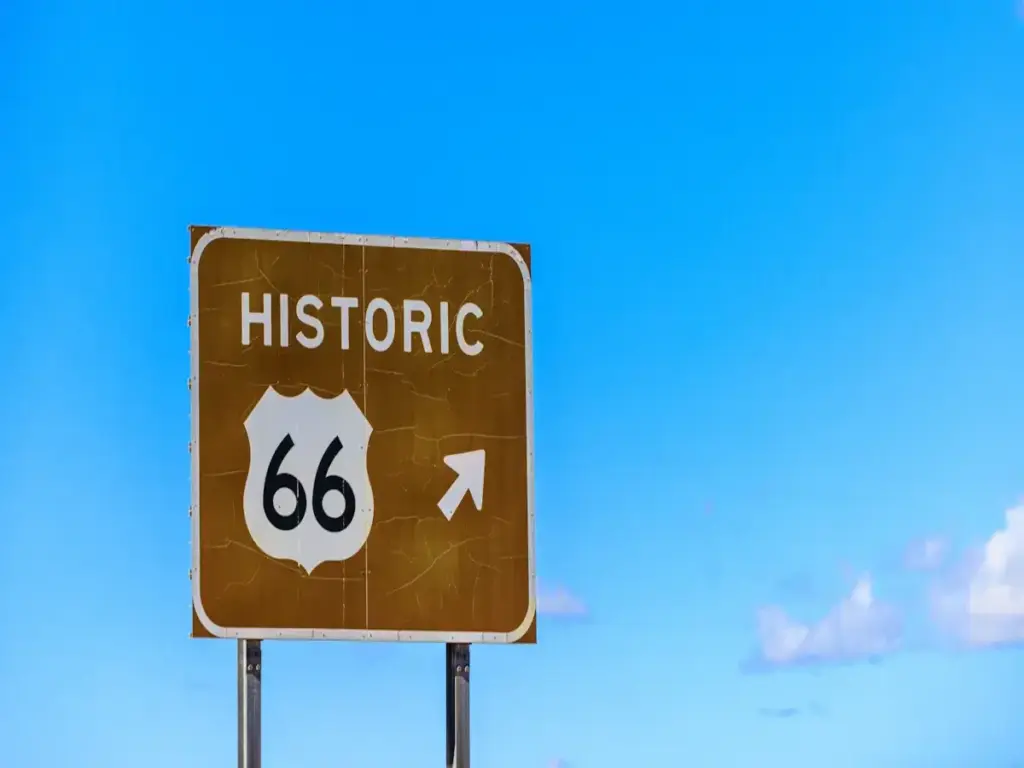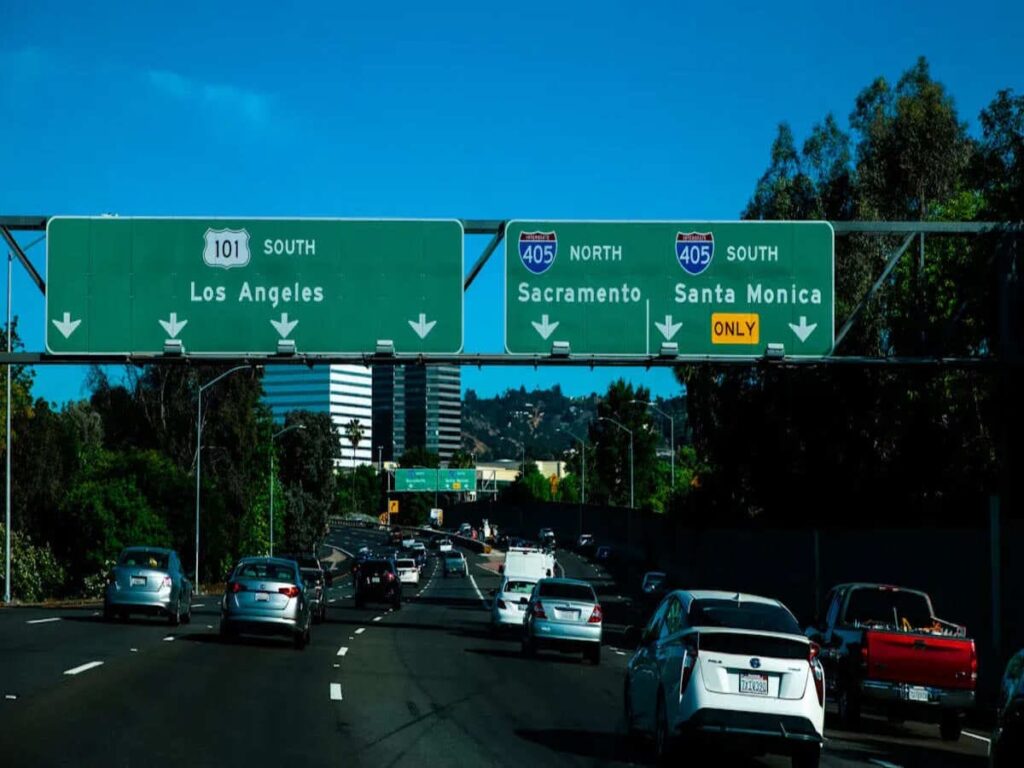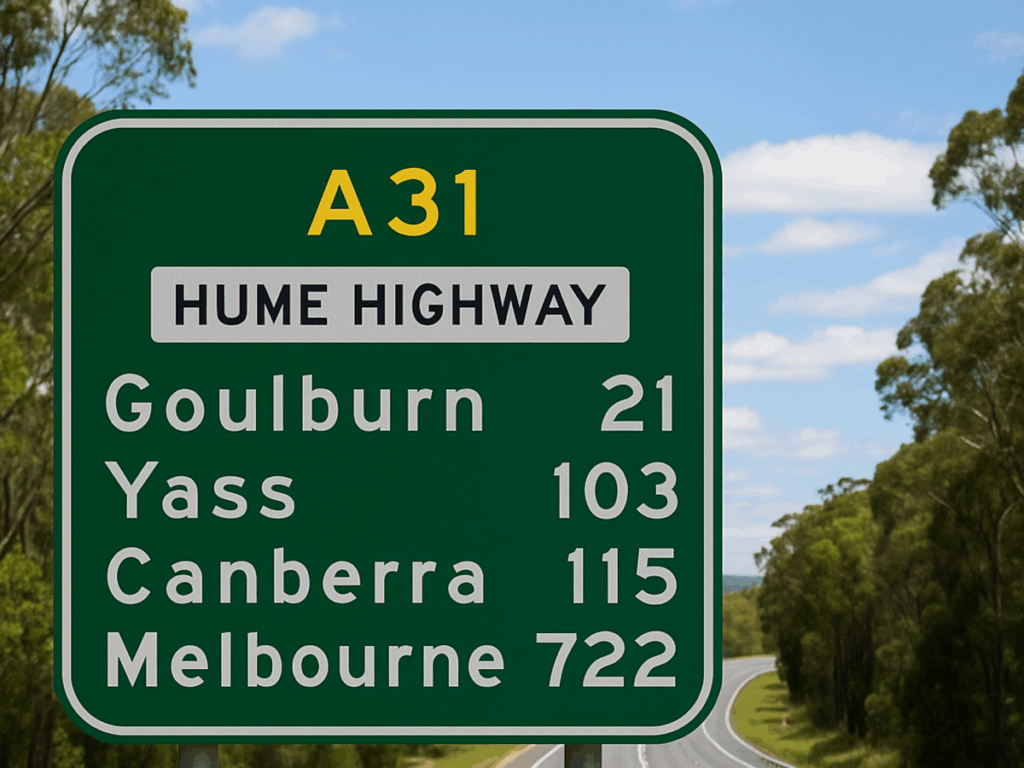
Информационные знаки должны использовать определенный шрифт., цвет, и правила монтажа от AS 1742.15. Эти правила помогают сделать дорожные знаки четкими и одинаковыми по всей Австралии.. Информационные знаки используют специальный шрифт и цвет, чтобы их было легко читать.. Соблюдение этих правил помогает обеспечить безопасность людей и гарантирует, что все водители получат одно и то же сообщение.. Информационные знаки отличаются от нормативных или предупреждающих знаков.. Они дают рекомендации или информацию, но не устанавливают правила..
Чтобы узнать больше о том, как AS 1742 Стандарты формируют дорожные знаки по всей стране, read our blog: Понимание как 1742: Фонд австралийских правил дорожного движения.
Ключевые выводы
- Используйте АС 1744 Шрифт Транспортной серии. Убедитесь, что размер буквы, интервал, и заглавные буквы правильные. Это помогает людям легко читать и понимать знаки..
- Выбирайте синий фон с белым текстом для стандартных знаков.. Это обеспечивает сильный контраст и позволяет легко увидеть знаки при любом освещении..
- Размещайте знаки на нужной высоте и в нужном месте.. Водители должны легко видеть их, чтобы ничто их не блокировало и не отвлекало..
- Часто проверяйте знаки на наличие повреждений, угасание, или что-то блокирующее их. Это делает дороги чистыми и безопасными для всех, кто ими пользуется..
- Всегда используйте AS 1742.15 внимательно проверьте список. Это помогает избежать ошибок и обеспечивает безопасность и одинаковость информационных знаков на всех дорогах..
Информационные знаки: Шрифт
Шрифт
КАК 1742.15 говорит, что все информационные таблички должны использовать AS 1744 Шрифт Транспортной серии. Этот шрифт помогает водителям быстро и легко читать знаки.. В правилах сказано, что только этот шрифт достаточно понятен для участников дорожного движения.. Дизайнеры не могут использовать другие шрифты для легенды на этих знаках.. Шрифт Transport Series имеет четкие буквы и хороший интервал.. Это упрощает расположение лицевой стороны дорожного знака и позволяет водителям быстро увидеть сообщение.. Формы и размеры букв подходят для разных дорог и скоростей..
Размер и иерархия
Правила дают четкие инструкции по размеру букв и порядку указателей направления.. На основных маршрутах или местах используются более крупные буквы.. Дополнительные детали, как названия объектов, используйте буквы меньшего размера. Это помогает водителям первым увидеть самую важную легенду.. Правила расположения лицевой стороны знака показывают, как расположить легенду, чтобы выделить основной маршрут.. Размер букв зависит от скорости дороги и от того, насколько далеко водители читают знак.. Большие буквы помогают на шоссе или скоростных дорогах.. Меньшие буквы подходят для местных улиц или небольших дорог.. Правила также объясняют использование разных типов и размеров букв для каждой части легенды..
Примечание: Всегда используйте правила расположения знаков, чтобы обеспечить правильный порядок и дизайн для каждой легенды..
Капитализация
КАК 1742.15 дает четкие правила использования заглавных букв на указателях направления.. В легендах основных маршрутов и географических названий используются все заглавные буквы.. В типах объектов или дополнительных деталях часто используются как большие, так и маленькие буквы.. Это облегчает чтение и сканирование легенды.. Правила помогают дизайнерам выбирать правильные заглавные буквы для каждой части легенды.. Использование правильных заглавных букв помогает в дизайне и позволяет водителям быстро находить ключевые детали маршрута..
Интервал и разборчивость
Хорошее расстояние между буквами, слова, и строки очень важны для чтения. Правила устанавливают минимальные промежутки, чтобы буквы не скапливались.. Хорошее расстояние помогает водителям читать легенду на знаках издалека и на скорости.. Правила расположения лицевой стороны знака показывают, сколько места следует оставить вокруг легенды и между строками.. Проектировщики должны следить за тем, чтобы легенда не касалась края знака.. Это свободное пространство делает дизайн лучше и помогает легенде выделиться.. Хорошее расстояние также помогает водителям следовать по маршруту, не запутываясь..
- Ключевые моменты для интервалов:
- Оставляйте достаточно места между каждой буквой.
- Сохраняйте четкий разрыв между строками легенды..
- Убедитесь, что легенда не касается края знака..
Следование этим правилам делает каждую надпись на указателях легко читаемой и понятной.. Это помогает обеспечить безопасность поездок и позволяет водителям уверенно ориентироваться в дороге..
Цвет и контраст
Фон и текст
Информационные знаки имеют синий фон с белым текстом.. Это позволяет водителям легко их видеть.. Это также не позволяет людям путать их с другими дорожными знаками.. Синий цвет выделяется в большинстве мест., так что легенда ясна. Туристические и культурные знаки иногда используют коричневый фон с белым текстом.. Это особые случаи. Фон всегда должен быть одного сплошного цвета.. Никаких шаблонов быть не должно. Благодаря этому сообщение будет легко читаться..
Важно, чтобы текст и фон сильно отличались. Это называется контраст. Коэффициент контрастности показывает, насколько выделяется текст. Для обычного текста, соотношение должно быть не менее 4.5 к 1. Большой текст может иметь более низкое соотношение 3 к 1. Лучшее соотношение это 7 к 1 чтобы все хорошо видели. В таблице ниже показаны правильные коэффициенты контрастности для разных размеров текста.:
| Размер текста | Низкий коэффициент контрастности (АА) | Улучшенный коэффициент контрастности (ААА) |
|---|---|---|
| Нормальный | 4.5:1 | 7:1 |
| Большой | 3:1 | 4.5:1 |
Дизайнерам необходимо проверить контраст, прежде чем закончить вывеску. Благодаря этому легенда легко читается при любом освещении.. Хороший контраст помогает людям, которые плохо видят цвета или имеют слабое зрение..
Отражательная способность
Отражательная способность помогает дорожным знакам появляться ночью или в плохую погоду. AS/NZS 1906.1 дает правила для световозвращающих материалов. Эти материалы содержат крошечные стеклянные бусины или микропризмы.. Они отражают свет фар автомобиля обратно к водителю.. Благодаря этому вывеска выглядит яркой и четкой., даже в темноте или тумане.
Для разных дорог существуют разные типы светоотражающего материала.. В таблице ниже показаны основные типы:
| Класс светоотражающего материала | Предполагаемое использование / Скорость движения | Минимальная ретрорефлексная область | Минимальная ширина материала |
|---|---|---|---|
| Сорт 1 | Низкоскоростные участки (≤ 25 км/ч), НАПРИМЕР., Автоарки | 155 в² | 1 дюйм |
| Сорт 2 | Высокоскоростные дороги (> 25 км/ч), НАПРИМЕР., Городские улицы | 201 в² | 1.38 дюймы |
| Сорт 3 | Высокоскоростные дороги (> 50 км/ч), шоссе, плохая видимость | 310 в² | 2 дюймы |
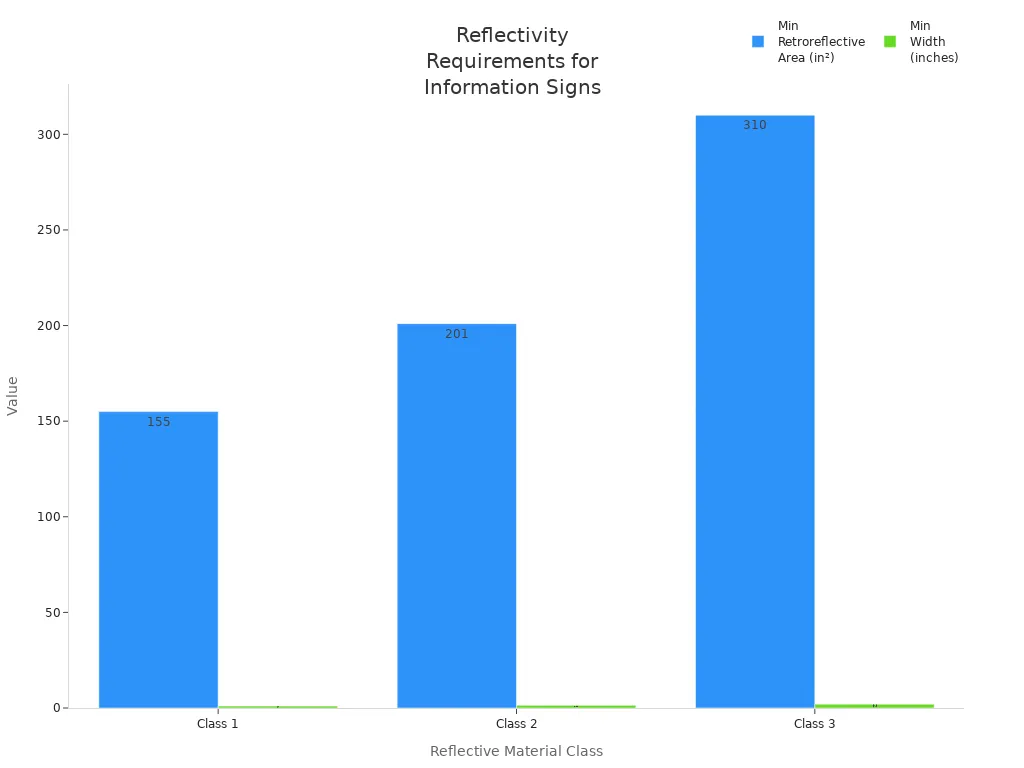
Сорт 3 материалы самые яркие и служат дольше всего. Вывески с этими материалами видно издалека. Это дает водителям больше времени для реагирования. Signs should be checked often to make sure they still reflect light well. Это поможет сделать дороги безопасными.
Prohibited Combinations
КАК 1742.15 bans some colour combinations for information signs. Например, you cannot use white text on a green background for community information signs. This stops confusion with route guidance signs, which use green. Designers should not use colours that look like regulatory or warning signs. Red or yellow backgrounds are not allowed. Using the wrong colours can confuse drivers or make the sign less useful.
Суммируя, using the right background, text colour, and reflectivity makes signs easy to see and understand. Good design helps everyone, even people with vision problems, найти свой путь благополучно.
Монтаж
Высота
КАК 1742.15 gives rules for how high to put signs. Most information signs should have their bottom edge between 1.5 и 2.0 метры над землей. This height helps drivers see the sign easily as they drive. If a sign is on a breakaway post, это должно быть хотя бы 2.2 метры высотой. This extra height keeps people safer if a car hits the post. Signs that are too low can be blocked by parked cars or things by the road. Signs that are too high are hard to read, especially for people in small cars. These rules help keep every route safe and simple to follow.
Lateral Placement
Signs must be put in the right place from the side of the road. This keeps them easy to see and away from traffic. Designers need to follow rules for how far signs are from the road edge. Signs should not block other signs or traffic lights. Here are the main points for where to put signs:
- Overhead signs above paths must have at least 2.03 metres of space under them.
- Post-mounted signs with leading edges between 685 мм и 2.03 metres high cannot stick out more than 305 мм в путь.
- The 305 Правило мм также учитывается для расстояния между стойками, за исключением наклонных поручней.
- Знаки с передними краями внизу 685 мм или выше 2.03 метры могут торчать на сколько угодно из столбов или пилонов.
Эти правила помогают сохранить путь свободным и безопасным для всех..
Ориентация и препятствия
Каждый знак должен быть обращен к встречному транспортному средству.. Это помогает водителям читать легенду, не поворачивая головы.. Дизайнерам следует искать деревья, поляки, или скамейки, которые могут заблокировать знак. Знаки не должны быть скрыты припаркованными автомобилями или другими предметами.. Для знаков предварительного выхода на больших дорогах, знаки, возможно, придется повесить над дорогой. Сюда, все водители на каждой полосе могут их видеть и готовиться к следующему повороту..
Структурные требования
Знакам нужны сильные столбы или опоры, чтобы оставаться на ногах.. Конструкция должна удерживать знак устойчиво при ветре и непогоде.. Все публикации и поддержка должны соответствовать правилам AS. 1742.15. Цвет столба не должен отвлекать внимание от легенды или сливаться с фоном.. Большинство столбов серого или серебристого цвета, чтобы соответствовать дорожному покрытию.. Проектировщики должны проверить соответствие конструкции знака правилам безопасности дорожного движения.. Регулярные проверки помогают сохранить знак в безопасности и сделать его видимым..
Для гарантированного качества Кадры дорожного знака которые соответствуют стандартам AS и подходят для всех дорожных условий Австралии., ознакомьтесь с полным ассортиментом на ОПТРАФИК.
Проблемы соответствия
Общие ошибки
Многие команды допускают подобные ошибки при установке или проектировании информационных знаков маршрута.. Эти ошибки могут снизить безопасность и затруднить движение водителей по правильному маршруту.. Некоторые из наиболее распространенных проблем включают в себя:
- Использование неправильного цвета для знака, например, красный или желтый, что может сбить водителей с толку относительно типа знака на маршруте.
- Размещение знаков слишком близко к перекресткам, которые могут блокировать линии обзора и затруднять просмотр маршрута впереди..
- Невозможность регулярно проверять знаки, поэтому выцветшие или поврежденные знаки остаются на месте и ухудшают четкость маршрута..
- Не быстро удалять или чинить сломанные знаки., что может привести к путанице на маршруте.
- Разрешение блокировать знаки деревьями, оборудование, или припаркованные транспортные средства, сделать маршрут менее ясным.
- Использование неправильного размера или типа знака, что может сделать размер буквы слишком маленьким или слишком большим для маршрута..
- Отсутствие знаков в ключевых точках, поэтому водители теряют маршрут.
- Размещение знаков слишком высоко или слишком низко, из-за чего письмо становится труднее читать, а маршрут сложнее следовать..
- Использование устаревшей информации, что может направить водителей по неправильному маршруту.
- Несоблюдение правил межбуквенного интервала, что может затруднить чтение легенды.
Как избежать ошибок
Практикующие могут использовать несколько стратегий, чтобы избежать этих ошибок и обеспечить чистоту и безопасность каждого маршрута.. Следующие шаги помогут обеспечить соответствие каждой буквы и знака стандарту.:
- Обеспечьте регулярное обучение всего персонала, чтобы он понимал правила размера букв., интервал, и размещение на каждом маршруте.
- Регулярно проверяйте все знаки на маршруте, чтобы заметить выцветшие буквы., заблокированные просмотры, или устаревшая информация.
- Используйте понятные и простые легенды, каждая буква хорошо расположена, чтобы помочь водителям быстро прочитать маршрут.
- Распределите указатели вдоль маршрута, чтобы избежать скоплений людей, которые могут отвлекать водителей и скрывать важные буквы..
- Держите контрольный список для каждого маршрута, чтобы убедиться, что каждая буква, цвет, и правила монтажа соблюдаются.
- Как можно скорее удалите или исправьте любой знак с поврежденной буквой или нечеткой надписью..
- Размещайте знаки на нужной высоте и на нужном расстоянии от дороги, чтобы каждую букву на маршруте было легко увидеть..
- Обновляйте знаки при изменении маршрута, поэтому информация остается верной и каждая буква соответствует новому маршруту.
- Избегайте использования цветов или символов, похожих на нормативные или предупреждающие знаки., поэтому маршрут остается свободным.
- Протестируйте новые знаки на маршруте, чтобы убедиться, что водители могут прочитать каждую букву и беспрепятственно следовать по маршруту..
Кончик: Регулярные курсы повышения квалификации и проверки помогают командам своевременно выявлять проблемы и обеспечивать безопасность каждого маршрута для всех участников дорожного движения..
Контрольный список
Шрифт
- Используйте АС 1744 Шрифт Transport Series для всех указателей направления.
- Убедитесь, что в основной легенде для ключевых пунктов маршрута используются буквы большего размера..
- Place supplementary information in smaller letter sizes below the main legend.
- Write main destinations in capital letters. Use mixed case for facility types or extra details.
- Ensure each letter has enough space from the next letter and from the edge of the sign.
- Avoid crowding the legend. Good spacing helps drivers read the legend quickly on any route.
- Confirm that the legend stands out clearly on all direction signs along the route.
- Review the sign face layout to keep the legend easy to scan at speed.
- Test the legend for legibility at the typical viewing distance for the route.
- Update the legend if the route changes or if the letter size does not match the road speed.
Кончик: A clear legend with the right letter size and spacing helps every driver follow the route with confidence.
Цвет
- Используйте синий фон с белой легендой для стандартных указателей направления на маршруте..
- Для туристических или культурных объектов, используйте коричневый фон с белой надписью.
- Никогда не используйте красный, желтый, или зеленый фон для информации сообщества о маршруте.
- Убедитесь, что легенда и фон сильно контрастируют.. The 2025 Стандарт ICC A117.1 требует минимум 65% коэффициент контрастности между легендой и фоном.
- Рассчитайте контрастность по формуле: Контраст = [(Б1 – Б2) / Б1] х 100, где B1 — значение светоотражения более светлой поверхности, а B2 — значение более темной поверхности..
- Документируйте коэффициент контрастности с помощью данных производителя., лабораторное тестирование, или полевые измерения.
- Для освобожденных типов знаков, следовать правилу: светлая легенда на темном фоне или темная легенда на светлом фоне.
- Убедитесь, что легенда остается видимой при любом освещении на маршруте..
- Избегайте комбинаций цветов, которые могут спутать легенду с нормативными или предупреждающими знаками..
- Регулярно проверяйте легенду, чтобы цвета не тускнели и маршрут оставался ясным..
Монтаж
- Установите нижний край указателей направления между 1.5 и 2.0 метров над уровнем земли на маршруте.
- Для отколовшихся постов, поднять знак хотя бы до 2.2 счетчики для безопасности.
- Разместите каждый знак на правильном боковом расстоянии от дороги, чтобы легенда не была заблокирована..
- Повернитесь к легенде навстречу встречному транспорту на маршруте для лучшей видимости..
- Проверьте наличие деревьев, поляки, или припаркованные транспортные средства, которые могут скрыть легенду на маршруте.
- Используйте сильные стойки или опоры, соответствующие AS. 1742.15 для всех указателей направления.
- Выбирайте цвета опор, которые не отвлекают от легенды и не сливаются с фоном..
- Для указателей направления предварительного выхода, при необходимости используйте консольное крепление, чтобы легенда была видна на каждой полосе движения.
- Регулярно проверяйте крепление, чтобы легенда была стабильной и четкой на маршруте..
- Замените или отремонтируйте любой знак, где легенда или буква повреждены или плохо читаются..
Примечание: Правильный монтаж обеспечивает видимость легенды и безопасность маршрута для всех участников дорожного движения..
Использование правильного шрифта, цвет, и монтаж делает знаки легко видимыми и безопасными в использовании..
- Установка знаков на правильной высоте помогает людям со слабым зрением лучше их читать..
- Стиль и размер шрифта меняют скорость, с которой водители замечают знаки..
- Знаки легче читать всем, когда есть сильный контраст и хорошее освещение..
Люди, которые проектируют вывески, всегда должны следовать контрольному списку и проверять AS. 1742.15 на каждую работу. Этот стандарт дает четкие инструкции по изготовлению и установке информационных знаков.. Это помогает обеспечить безопасность всех дорог и везде использовать одинаковые знаки..
Часто задаваемые вопросы
Какой шрифт использует AS 1742.15 Требуются информационные таблички?
КАК 1742.15 говорит использовать AS 1744 Шрифт Transport Series для всех информационных знаков. Этот шрифт позволяет водителям быстро читать сообщения.. Использование других шрифтов на этих знаках запрещено..
Почему информационные знаки используют синий фон?
Синий фон с белым текстом помогает водителям быстро увидеть информационные знаки.. Такое сочетание цветов выделяется и не похоже на предупреждающие или нормативные знаки.. Вместо этого туристические и культурные знаки могут иметь коричневый фон..
На какой высоте следует устанавливать информационные таблички?
У большинства знаков нижний край должен располагаться между 1.5 и 2.0 метры над землей. Знаки на отколовшихся столбах должны быть не менее 2.2 метры высотой. Это делает знаки легко видимыми и безопасными для всех..
Какие распространенные ошибки при установке информационных знаков?
Иногда команды используют неправильные цвета или размещают знаки слишком низко.. Деревья могут заблокировать знак, или размер шрифта может быть неправильным. Команды также могут забыть проверить выцветшие знаки.. Проверка знаков часто помогает решить эти проблемы..


